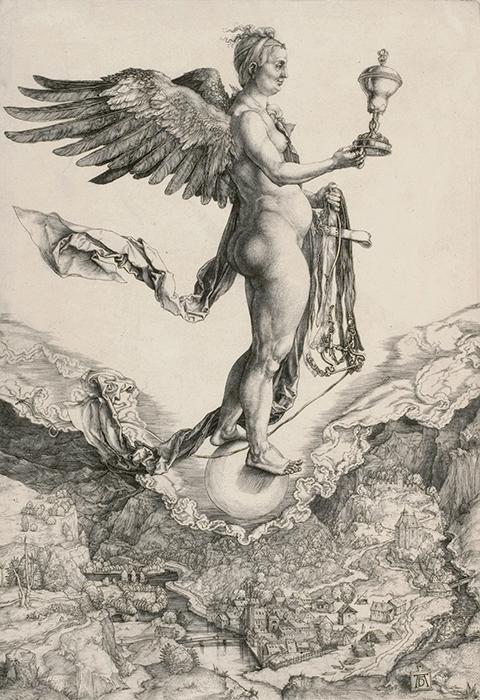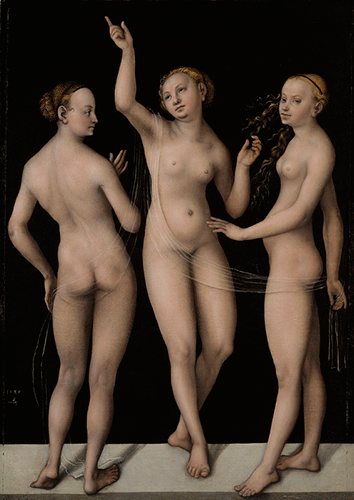Perfectly Imperfect: Cranach, Dürer and the Renaissance Nude
Sensuous Greek goddesses cast inviting glances at the viewer; a winged nude with powerful proportions floats above a panoramic landscape; four women, naked except for elaborate headdresses, stand huddled in a conspiratorial group.
Remarkably lifelike and engaging, these nudes represent the beauty ideals of two prominent artists of the Northern Renaissance: Albrecht Dürer and Lucas Cranach the Elder. While Dürer relied on a system of precise mathematical measurements when depicting the human body, Cranach developed a distinctive figural type whose attenuated bodies did not conform to Renaissance ideals of harmony and mathematical proportion.
The exhibition Perfectly Imperfect: Cranach, Dürer and the Renaissance Nude will feature a selection of prints and paintings drawn primarily from the collection of the Nelson-Atkins Museum of Art. Two significant loans from the Saint Louis Art Museum and the Linda Hall Library will provide a unique opportunity to gain a deeper understanding of these two artists and their widely-divergent approach to the female form.
For groups interested in learning more about the artwork on view in this exhibition, please request a European Art Collection tour and request in the notes that the exhibition be included as part of the tour.
Organized by The Nelson-Atkins Museum of Art.

